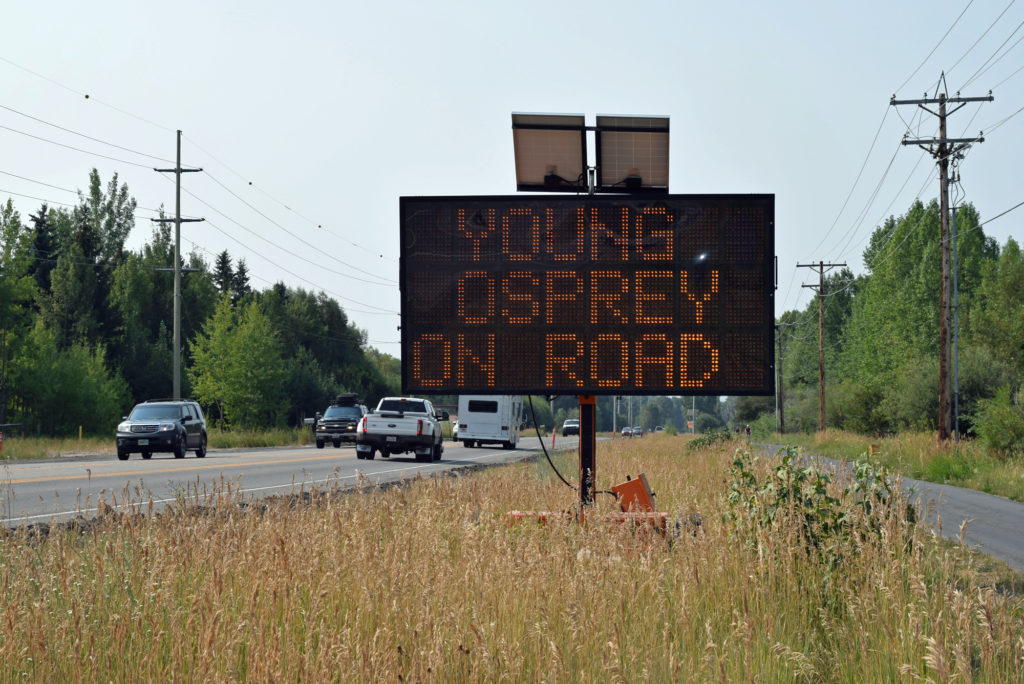by Jon Mobeck, Executive Director
Across all of our programs, Jackson Hole Wildlife Foundation works to reduce human-caused impacts on wildlife. The negative impacts of roads are well documented, at least as it relates to vehicle collisions with large mammals. Less discussed is the impact on birds, although we know that impact to be significant. Teton Raptor Center admits more birds that have been struck by vehicles than any other source of injury. Some can be rehabilitated. Many cannot.

Raptor mortalities from vehicle strikes are not uncommon. On August 15, a hatch year Osprey was killed by a recreational vehicle on WY 22, not too far from a nest platform designed to support life for these magnificent raptors. The location of the collision was also not far from a digital message sign warning drivers that young Osprey may be on the road. The reason for the warning is that a fledgling Osprey may take a few weeks to take flight after initially leaving the nest. Its learning curve can include erratic flight, much like a toddler’s first wobbling steps. As many of us know in Jackson Hole, Osprey nest platforms are often near highways, and like many other raptors, Osprey also perch on electrical poles. Because of these realities, it is essential that drivers understand the potential for collisions with these beautiful birds during this short summer window, hence the educational messaging on the signs that typically alert drivers only to the likely presence of elk, deer or moose. Osprey are a dazzling, conspicuous bird, and just as you would slow your speed if you saw an elk in the highway right-of-way, alert drivers can greatly reduce the likelihood of collision with these raptors by temporarily slowing speeds to watch for imminent flight in these areas.
There is no guaranteed solution for eliminating raptor deaths on the roadways. Wildlife crossing structures that can facilitate ungulate movement over or under a highway are of no help to birds. Signage and education can help generally, and real-time actions, such as temporary digital messaging near nest sites, can alert many, if not all drivers to the presence of young birds. Every action counts. Give Birds a Brake!

